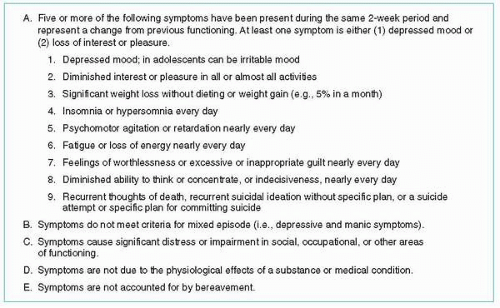Mental Health Problems
One in 10 children and adolescents in the United States suffers from mental illness.
Risk factors for depression in adolescence include significant loss, health problems, family history, abuse, and alcohol use.
Depression in adolescents is not normal.
Girls attempt suicide more often than boys, but boys are five times as likely to die from suicide.
The comorbidities of alcohol use, emotional disorder, and sexual acting out are predictors of adolescent suicidal behavior.
Do not hesitate to ask adolescents if they are suicidal; it may be a relief to them that someone notices how desperate they feel.
TERMS
Depression
Suicide
According to the National Institute for Mental Health (2006), in the United States today, one in 10 children and adolescents suffers from mental illness severe enough to result in significant functional impairment. By 2020, childhood neuropsychiatric disorders are expected to rise by more than 50% internationally to become one of the five most common causes of morbidity, mortality, and disability among youth.
Teens are an age group that many consider at risk for depression simply by virtue of their developmental period. Normative changes may be accompanied by dissatisfaction with body type, disappointment in love, uncertainty about the future, anxiety about sexuality, and conflict with family. For some, however, their feelings of despair and hopelessness are out of proportion to developmental events. When that happens, the risk for suicide increases.
Figure 64-1 lists the criteria for a diagnosis of major depression according to the fourth edition of the Diagnostic and Statistical Manual of Mental Disorders (DSM-IV; 1994; DSM-V is due to be published in 2011). Social/emotional symptoms include dejected mood, loss of pleasure, social withdrawal, and crying spells. Physical symptoms include fatigue, sleep disturbance, and loss of appetite. Cognitive symptoms include difficulty concentrating, indecisiveness, and distorted perceptions about events and relationships. Cognitive difficulties may result in poor academic performance. Teens may withdraw into sleep, television, or video games.
Although the incidence of depression increases with age, a meta-analysis by the National Institutes of Mental Health (2001) indicates that the overall prevalence of depression has remained
steady for almost 30 years. Among youths aged 13 to 18, 5.6% of teens have been diagnosed with depression, with girls (5.9%) being diagnosed more frequently than boys (4.6%). However, about 28% of teens report feeling sad or hopeless, with girls (36.7%) feeling that way more than boys (20.4%). Hispanic girls (46.7%) are at greatest risk, followed by girls from Asian, Native American and Pacific Islander backgrounds (41.5%).
steady for almost 30 years. Among youths aged 13 to 18, 5.6% of teens have been diagnosed with depression, with girls (5.9%) being diagnosed more frequently than boys (4.6%). However, about 28% of teens report feeling sad or hopeless, with girls (36.7%) feeling that way more than boys (20.4%). Hispanic girls (46.7%) are at greatest risk, followed by girls from Asian, Native American and Pacific Islander backgrounds (41.5%).
 Although the incidence of depression increases with age, a meta-analysis by the National Institutes of Health indicates that the overall prevalence of depression has remained steady for almost 30 years. Among youths aged 13 to 18, 5.6% of teens have been diagnosed with depression, with girls (5.9%) being diagnosed more frequently than boys (4.6%). However, about 28% of teens report feeling sad or hopeless, with girls (36.7%) feeling that way more than boys (20.4%). Hispanic girls (46.7%) are at greatest risk, followed by girls from Asian, Native American and Pacific Islander backgrounds (41.5%).
Although the incidence of depression increases with age, a meta-analysis by the National Institutes of Health indicates that the overall prevalence of depression has remained steady for almost 30 years. Among youths aged 13 to 18, 5.6% of teens have been diagnosed with depression, with girls (5.9%) being diagnosed more frequently than boys (4.6%). However, about 28% of teens report feeling sad or hopeless, with girls (36.7%) feeling that way more than boys (20.4%). Hispanic girls (46.7%) are at greatest risk, followed by girls from Asian, Native American and Pacific Islander backgrounds (41.5%).Stay updated, free articles. Join our Telegram channel

Full access? Get Clinical Tree


Get Clinical Tree app for offline access

